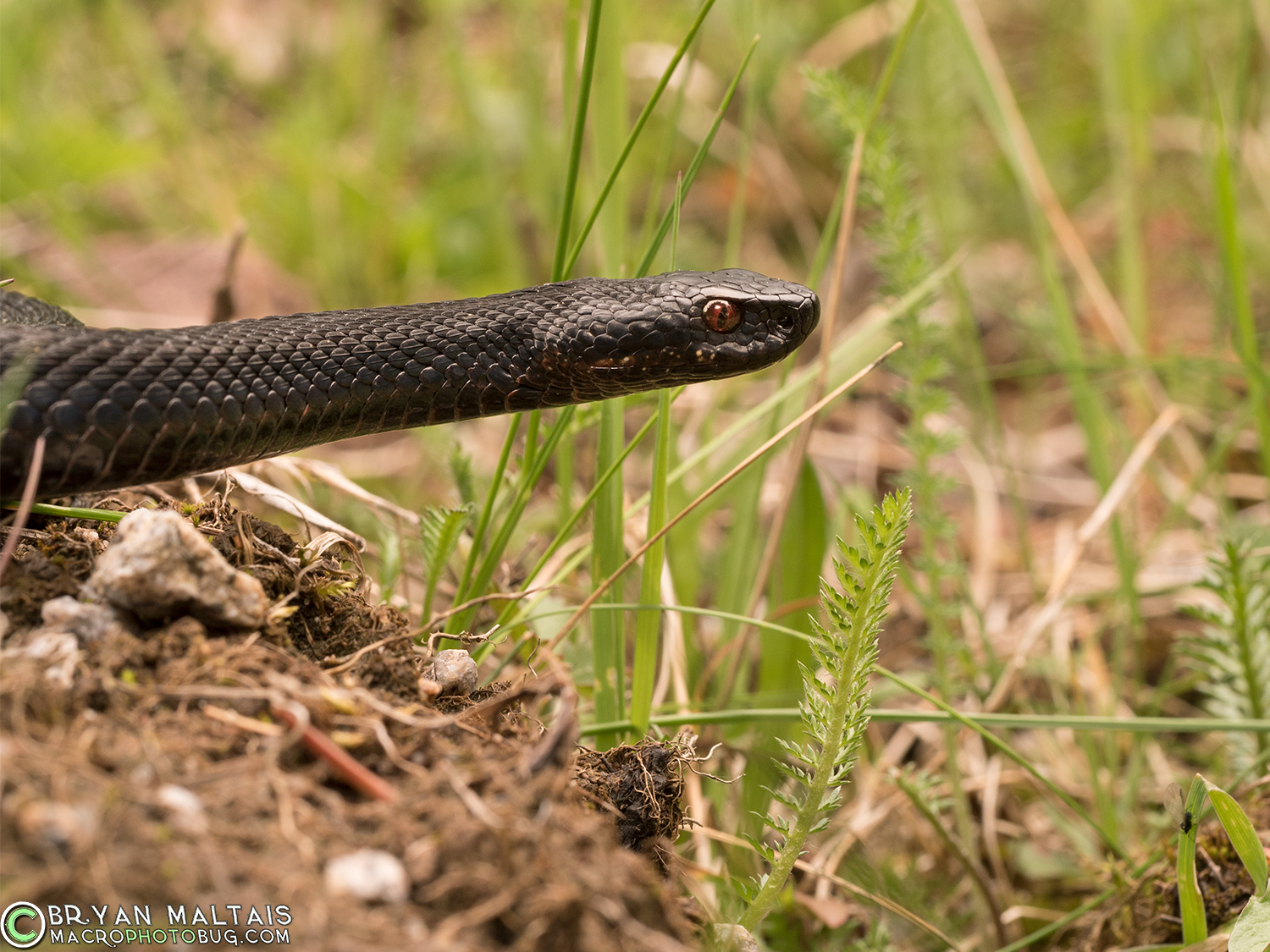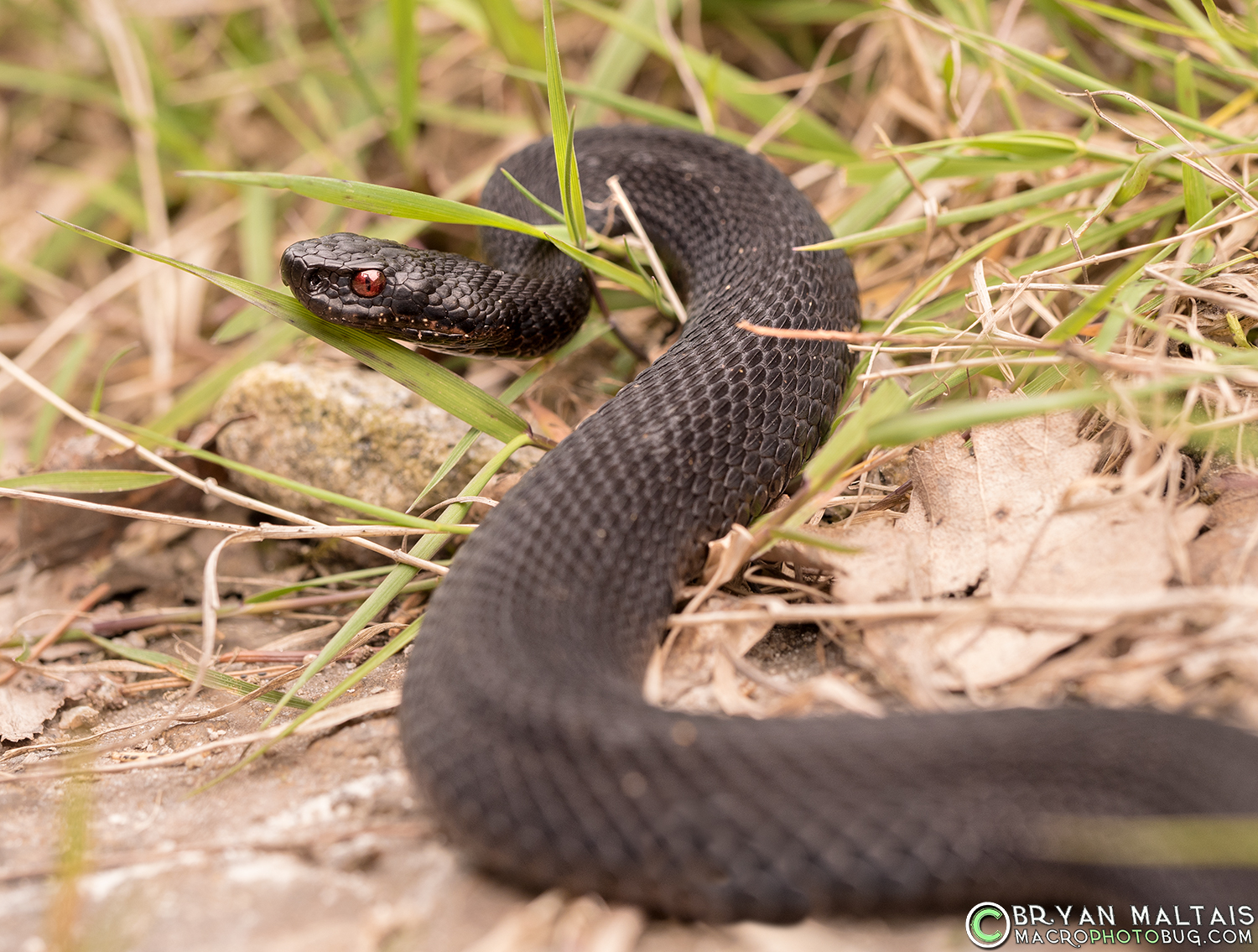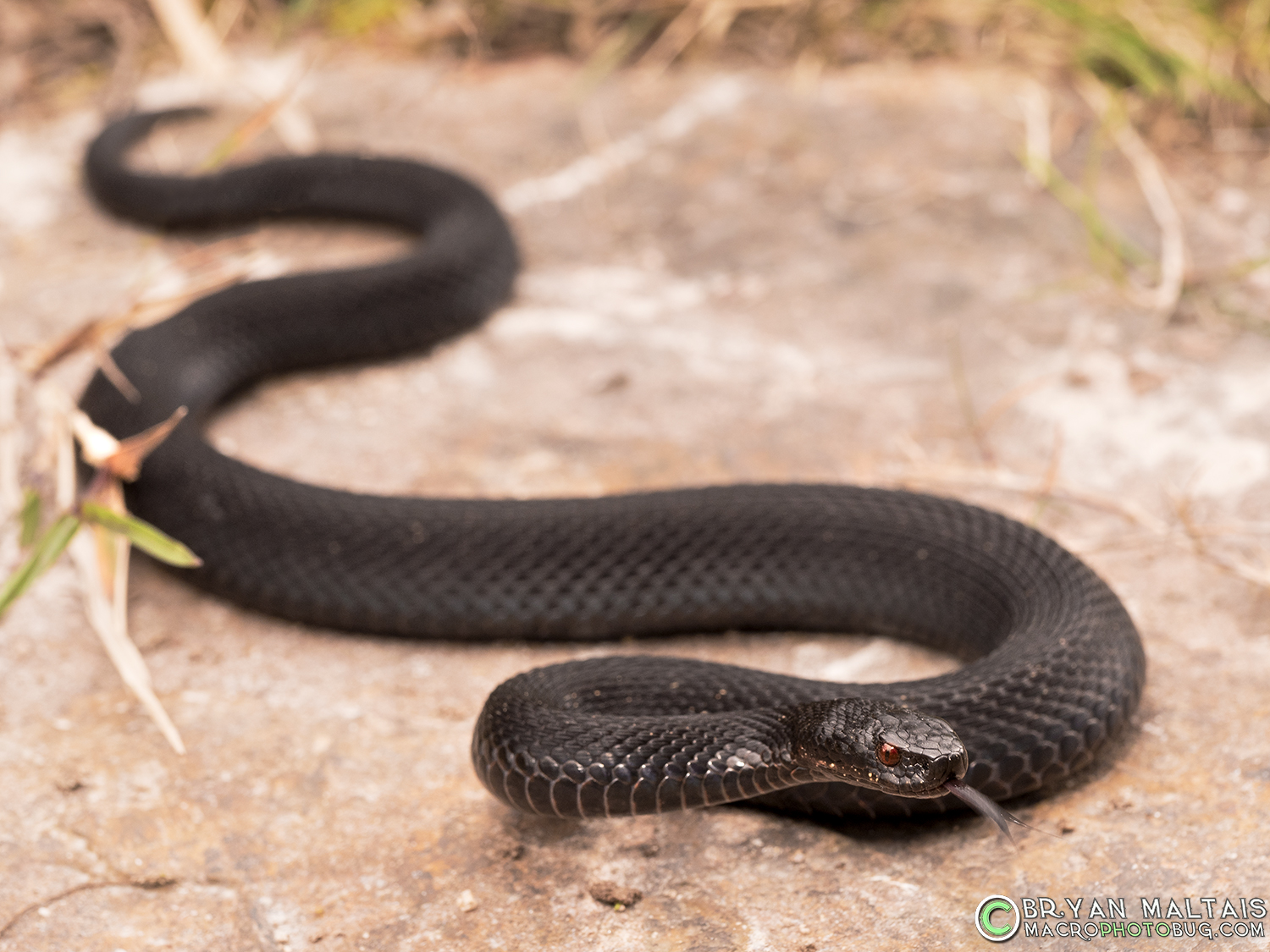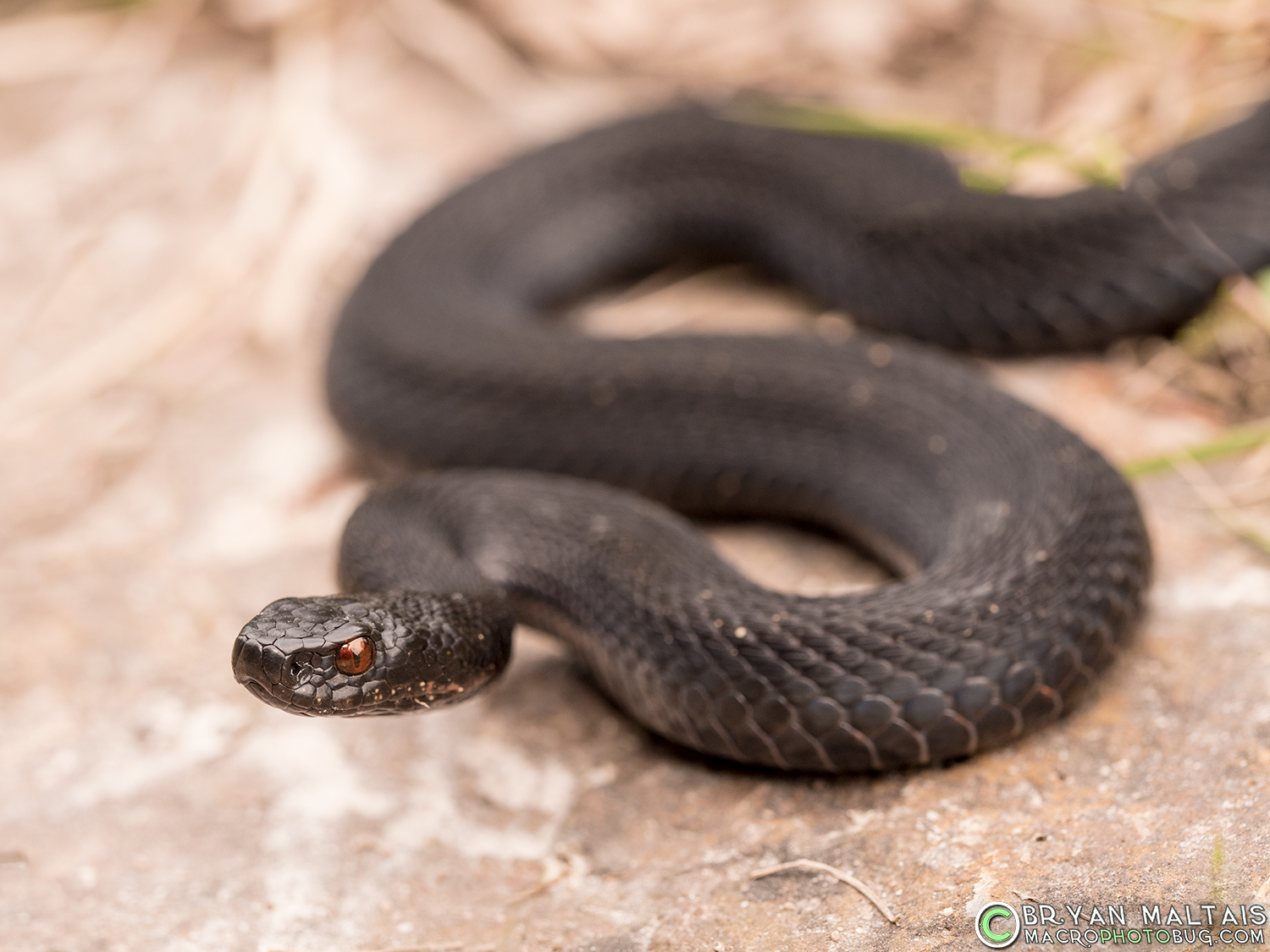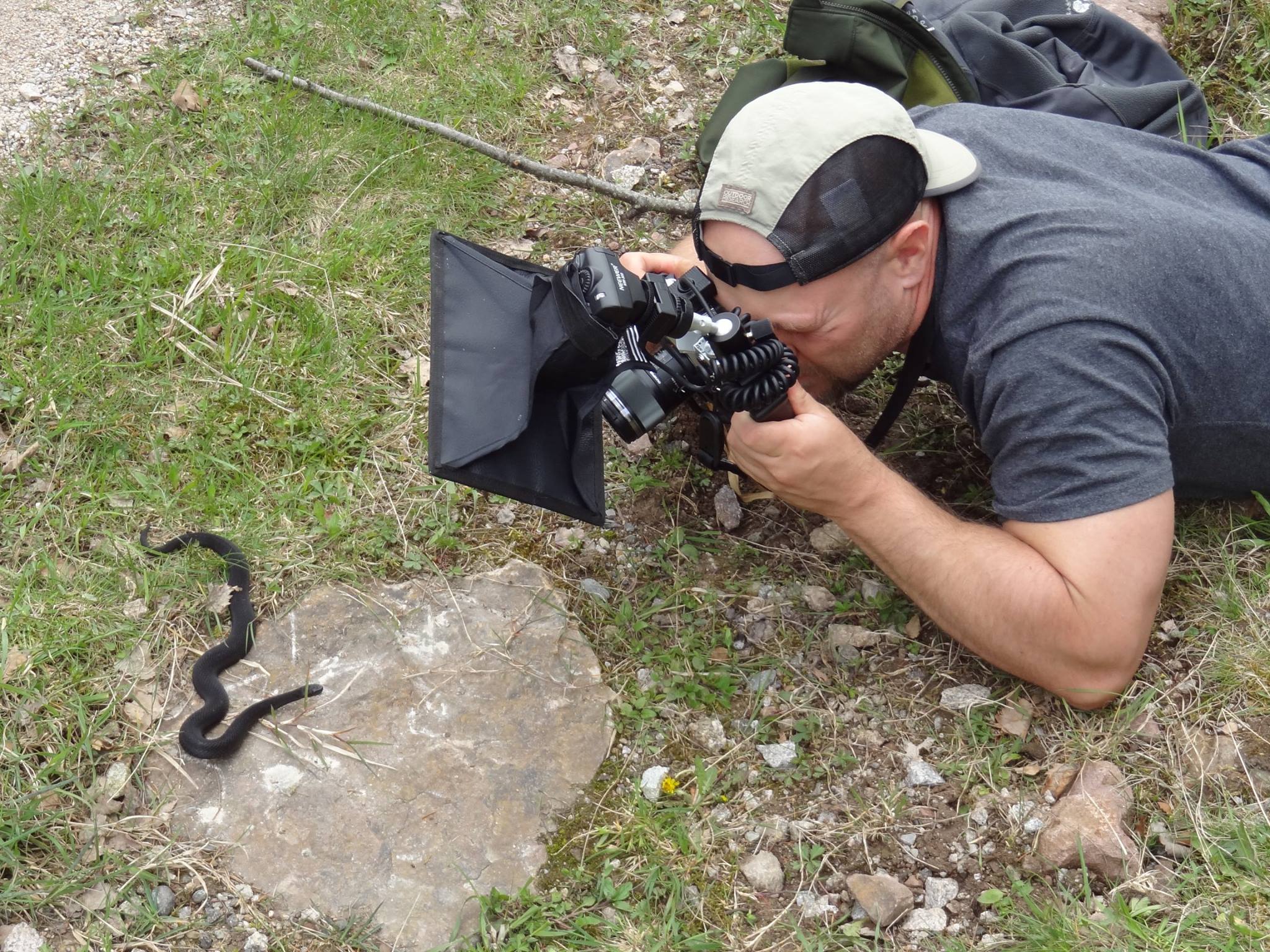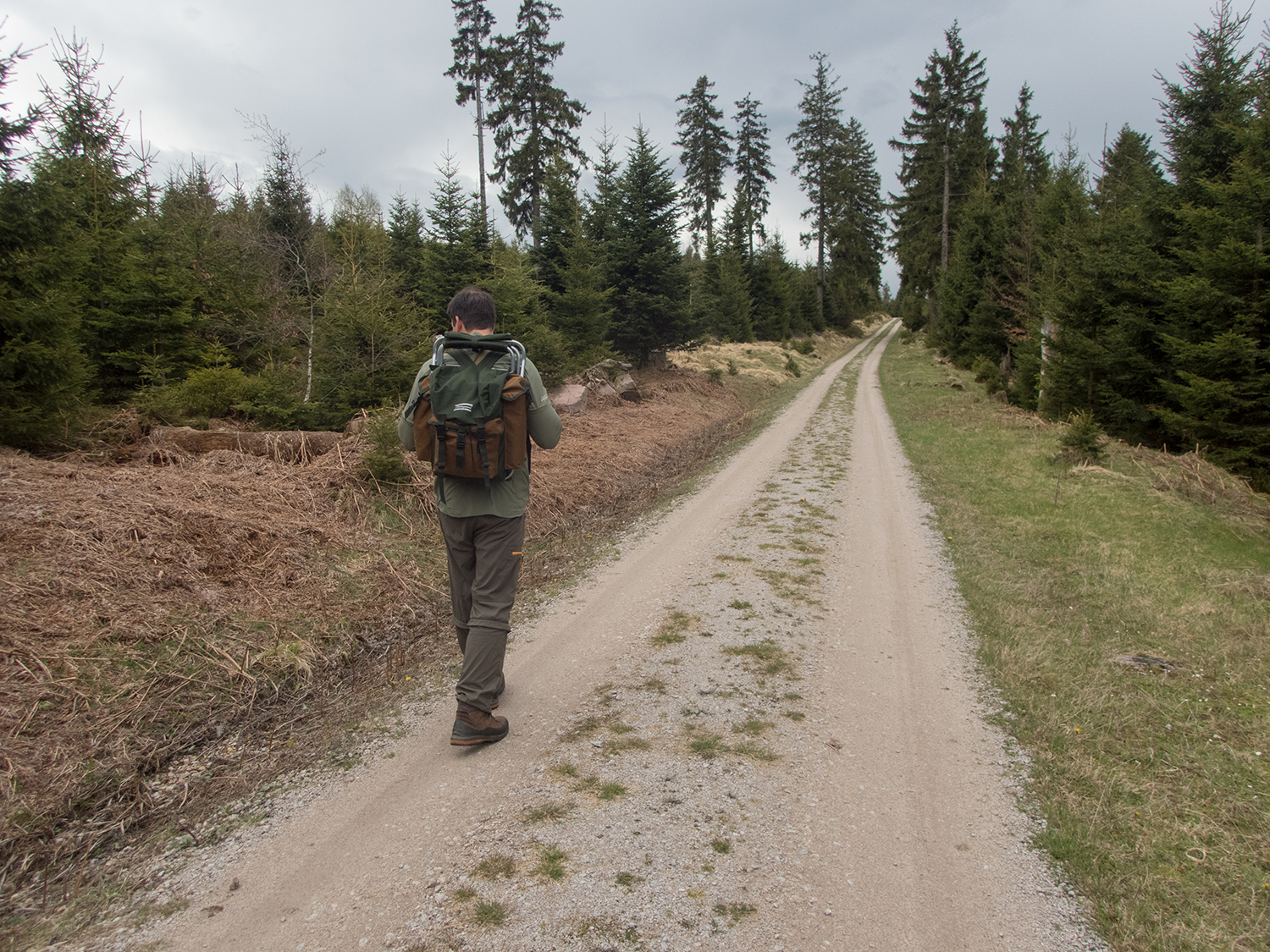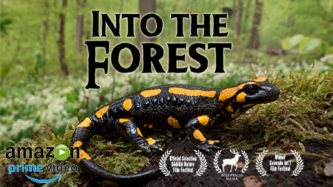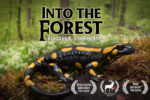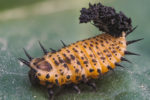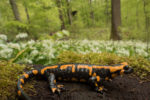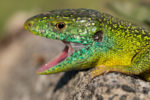News: Check out “Into the Forest”, new nature documentary about the reptiles and amphibians of central Europe.
There tend to be few situations in modern life anymore where one might consider buying a suit of armor, and befriending a powerful wizard for protection. Being asked to go on a quest into the Black Forest to find the Hell Adder might be one of them though. I received just such an offer from my friend Markus Bühler who’d located a population of the venomous serpents in southwest Germany. Markus is an avid herper and amateur field biologist who blogs about his adventures. Check it out for a diverse and interesting read about field zoology.
So what exactly is a Hell Adder, or “Höllenotter”? It’s the name given by the locals to the black morph of the European Common Adder (Vipera berus), which is normally brown with dark patterns. The Hell Adder is melanistic, meaning it has concentrations of dark pigment in its skin. The black morph isn’t a separate race/subspecies with different genetics, but rather, is caused by a latent recessive gene that, when expressed, causes melanism. It’s similar to if an animal is born albino. Some adders in this population whose melanistic gene hasn’t been expressed are brown. In moors and mountainous areas melanistic black Adders make up most of the population. The black color increases heat absorption in relatively cool environments that don’t get very hot even on summer days. The European Common Adder is called the “Kreuzotter” auf Deutsch.
We arrived in the Black Forest near the village of Kaltenbronn by mid morning. Our target was to walk along the gravel logging roads that criss-cross the forest. The roads create open edge habitat where sunlight can reach the forest floor, which is the best place to find adders. It was cool and cloudy, but the weather report called for patchy sun. Indeed the sun shone through shortly after we arrived and warmed things up. Markus spotted an Adder fairly early on slithering through some tall grass. It hissed loudly when we approached and was gone in an instant. I was only able to capture a blurry shot from far off that wasn’t usable. I was ecstatic just to have caught a glimpse of this rare animal being that our chances of seeing any were pretty low.
Despite being rare, the Common Adder has a conservation status of “least concern”. This is mostly because it has a massive range across Europe and Asia, and is therefore unlikely to go completely extinct. But despite this wide distribution, populations tend to be small, sparse and widely separated. Agriculture and development can easily wipe out entire colonies quickly. This is the only snake in the world that lives north of the arctic circle. One adaptation that allows it to inhabit such a cold region is that it’s live bearing. Instead of laying eggs that are dependent on warm ambient temperature to develop, the eggs develop and hatch inside the mother. This way she can move around to bask in warm spots throughout the day to keep the eggs inside her warm as they develop.
We spent the next few hours relentlessly hiking along the gravel roads while scanning the roadsides for more Adders. It started to drizzle, and cooled down a lot. I lost hope that we’d find any more. Although I was happy to have seen even one, my goal is always to leave with a technically “perfect” shot. In other words, no motion blur, eyes in focus, and a well balanced composition that can be considered both artistic and scientifically useful. And just to get my hopes up, shiny black slugs that looked like Hell Adder heads slithered all along the roads.
Other herps that we found were a Slow Worm/Blindschleiche (Anguis fragilis), which is a legless skink, a European Common Frog/Grassfrosch (Rana temporaria), and many Viviparous lizards/Waldeidechse (Zootoca vivipara).
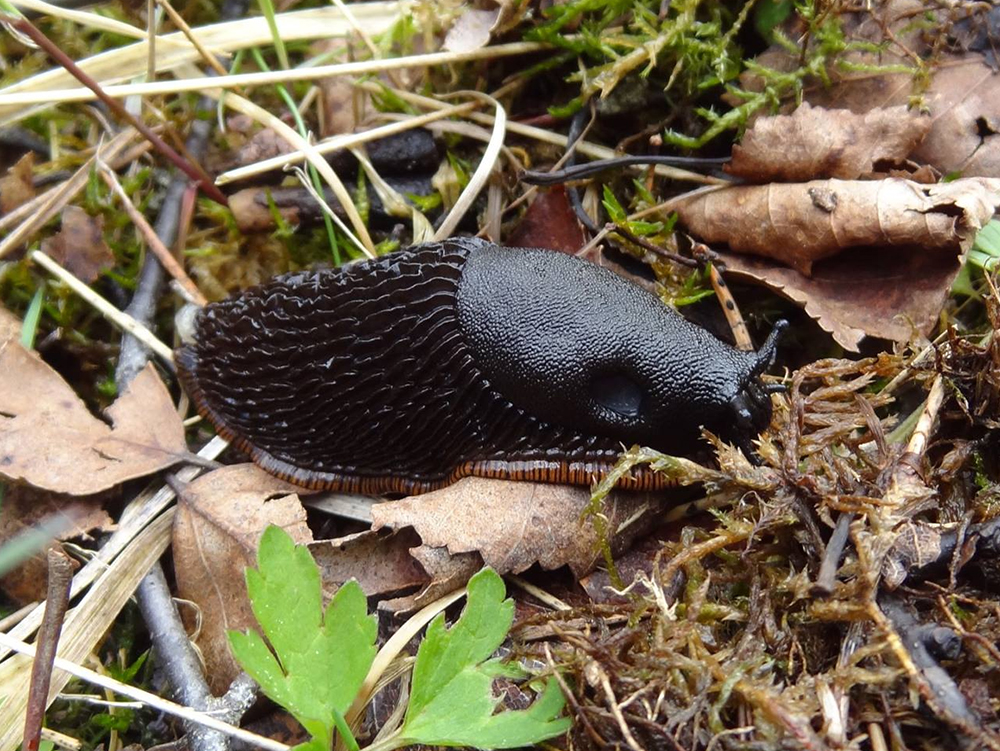
Black slugs complicated the search because they looked like the heads of Hell Adders. Photo by Markus Bühler
Does the Hell Adder earn it’s name? Statistically there have been so few deaths from Adder bites that they can’t be considered fatal. They also rarely cause tissue necrosis like Rattlesnake bites with hemotoxic venom. In other words, the Adder’s venom doesn’t result in disfiguring wounds from tissue being dissolved. Adder venom doesn’t lack the ability to do so, just the dose. It’s a very complex mix of agents that can digest tissues, impede nervous function, and shut down organs. But not enough venom is delivered to commonly affect humans in these ways. Components of Adder venom are used as ingredients in medications. So what are the effects of an Adder bite? According to the many scholarly articles that I had to read to get a complete picture, apparently the most common effects are severe pain and swelling accompanied by nausea. These symptoms eventually abate on their own. Less common is severe flu-like sickness that persists for days and requires hospitalization. Death or tissue necrosis is rare. It sounds similar to the bite of a Copperhead; painful but not deadly.

Forward thinking Germans have erected this life guard tower in the forest in case a swimming pool is ever built here. This is also typical Adder habitat.
By late afternoon it was pretty chilly and I was positive there was no chance of finding more adders. Just as I let my guard down and started getting cursory in searching Markus spotted one right off the road. About to disappear in tall grass, I caught the adder with a stick and set it down to photograph. Vipers are usually easy to photograph because you can get them to coil up and stay still. Not this one! It kept moving around to try to get away, which made getting a good shot almost impossible. This snake was a small sub-adult less than 2 ft long. It hissed a lot and readily struck when cornered, but was completely non-confrontational when left to slither.
Photography Equipment
I used my standard herping rig with a flash mounted off-center on a bracket with a soft box. Flash during the day works as fill flash to illuminate dark areas where detail would be lost. In this case it also glowed in the eyes of the Adder making them appear more red.
–Olympus E-M5 II Body
-Olympus 60mm Macro Lens
–Neewer 300 Mini Flash for Olympus
–Olympus Flash Cord
–Fotodiox Flash Softbox
-Flash Swivel Head
-Flash L Bracket

